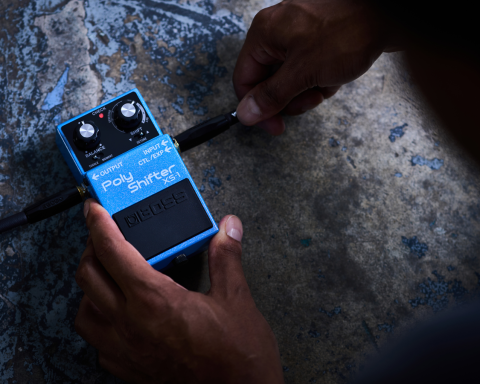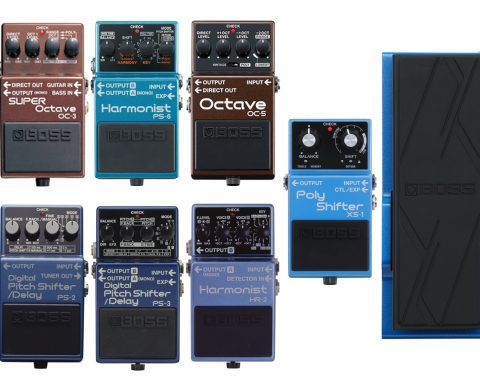Overdrive is a classic effect that can enhance guitar sounds across multiple genres. Versatile, powerful, and unwavering in quality—BOSS overdrive pedals like the SD-1W, BD-2W, and others provide a wealth of tonal options. Learn to get the best out of an overdrive and how the effect interacts with different guitar pickups and amplifier types. From achieving rich, creamy overdriven tones to using an overdrive as a clean boost, it’s all covered.
How Overdrive Pedals Work
Think of overdrive as an addition to a sound and distortion as a replacement. An overdrive pedal is what guitarists gravitate to preserve the sonic qualities of equipment as opposed to influencing it excessively with a distortion pedal.
An overdrive pedal applies a gain increase to replicate the effect of a cranked tube amp. These pedals offer the dynamic response, overtones, and pleasing harmonic distortion of an overdriven tube amp at any volume. Additionally, they provide softer clipping than distortion.
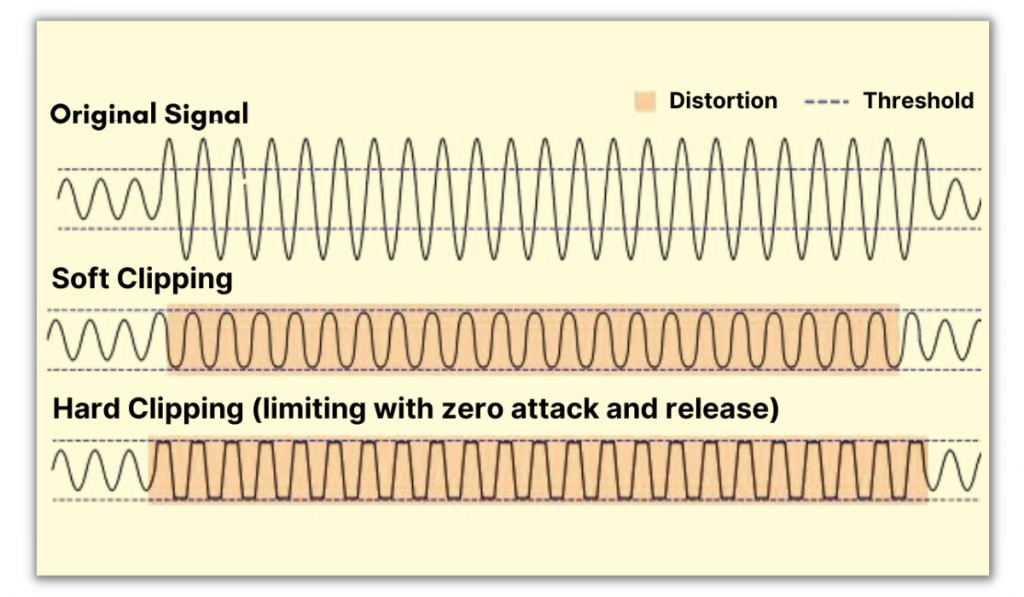
Wave Forms
Image One: This represents the sound of a guitar before it hits an amp which gets compressed into a usable signal, otherwise known as line level. Compression is necessary as it also helps retain the guitar’s volume without unwanted distortion. Amplifiers do this automatically to create a workable signal.
Image Two: This shows softer clipping, pushing the signal to the threshold’s limit but backing down with a softer decay, ensuring the sound stays within the threshold. An overdrive adds push while keeping the sound intact.
Image Three: Here we see what happens when we force the signal into the threshold. At that point, we begin to get clipping and distortion, altering the sound of the instrument.
FACT CHECK
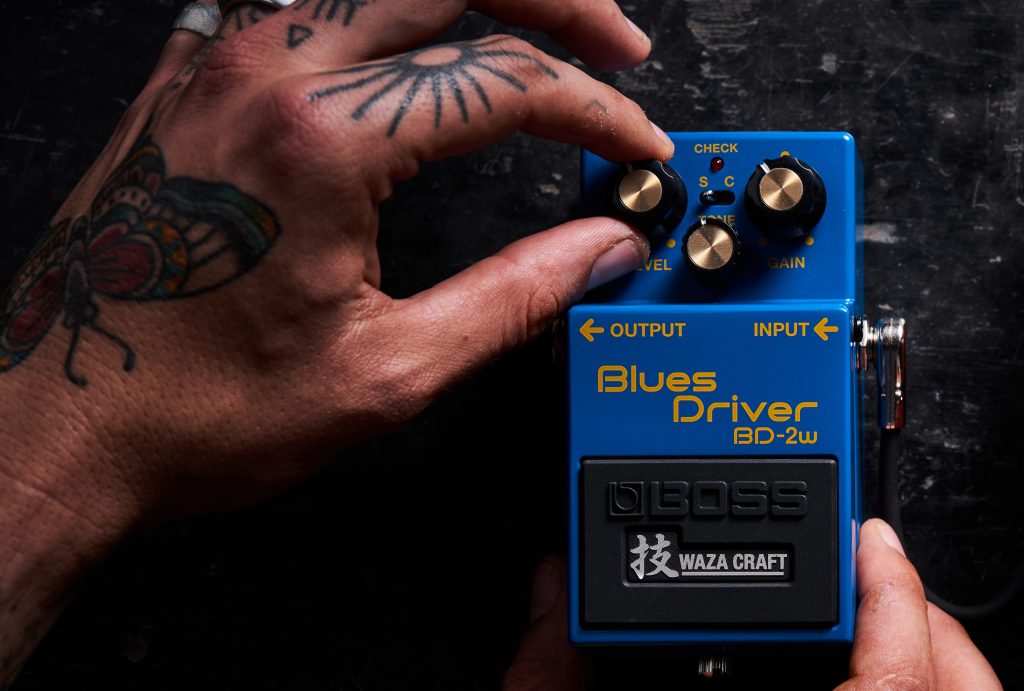
Different than Distortion
Some people believe overdrive pedals are the same as distortion pedals. While both types can add a crunchy sound to a guitar, they function differently. Overdrive pedals boost the guitar’s signal and slightly clip the waveform’s peaks for a broken-up sound. This tone is associated with the warm sound of a tube amp pushed to its limits. Distortion pedals produce the more aggressive, saturated sounds of heavy metal and hard rock.
Not Only for Lead Guitarists
While overdrive pedals add character to a lead part, rhythm guitarists can use them for punch and presence. Many players use it to add dynamics and texture to rhythm parts, especially in chorus sections.
For More than Heavy Music
Overdrive pedals can be used by any guitar player, regardless of genre. Many country and blues players use it to give their music more edge. John 5 of Rob Zombie uses an SD-1 and an SD-1W for country and bluegrass and with Rob Zombie. Furthermore, countless blues and jazz players rely on overdrive to add body to their sound.
Work with Many Amplifier Types
Guitarists can use an overdrive pedal with any amplifier type, including solid-state, keyboard, and vocal PA systems. One benefit is that overdrive pedals can achieve tube amp saturation at lower volumes. They operate with solid-state amps for a similar effect. An overdrive pedal can add a subtle distortion to a solid-state amp by boosting the guitar’s signal and slightly clipping the peaks.
All Overdrive Pedals Are Different
Each BOSS overdrive pedal produces a very different tone. For example, the SD-1 and SD-1W have a natural overdrive, while the BD-2 and BD-2W cover a wider gain range from crunch to distortion. It’s helpful to have multiple overdrive pedals. Try the former for verses and the latter for a lead or choruses.
AMPS and PICKUPS
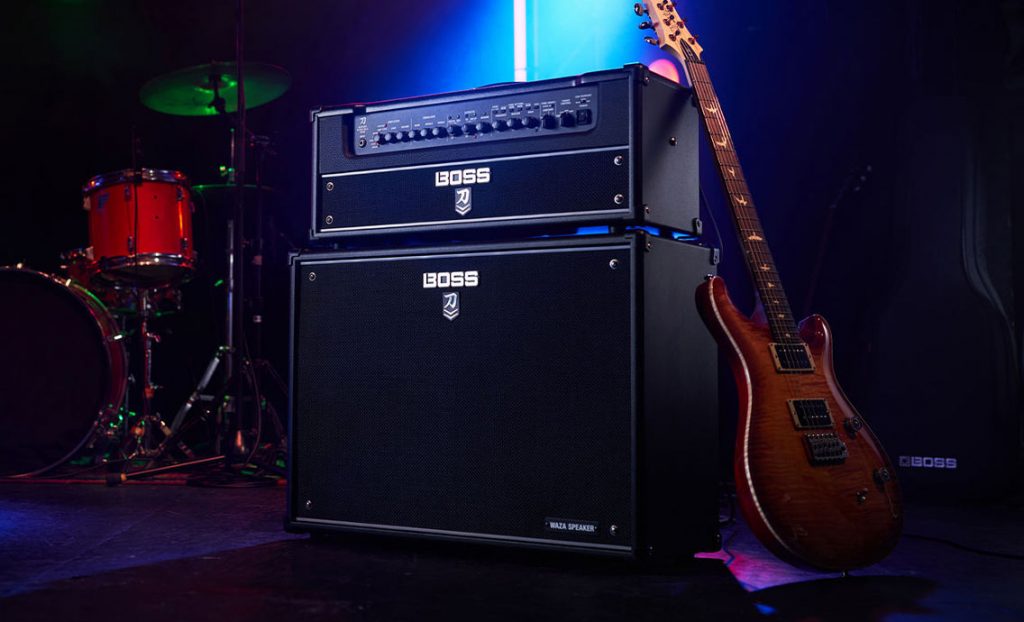
Pickup Configurations
Overdrive pedals interact differently depending on the type of pickups a player uses. Let’s examine how they react to single-coil versus humbucker pickups. Players appreciate single-coil pickups for their clarity and the twangy, crisp sound they produce. Humbuckers have a fuller tone with more sustain. Consider this when dialing in overdrive sounds.
"Overdrive pedals can drive or push the amp's tubes harder and increase harmonic distortion while adding color to the tone."
Tube Amps
Overdrive pedals can drive or push the amp’s tubes harder and increase harmonic distortion while adding color to the tone. This color is unique to each pedal—the nuances set them apart. A tube amp responds to the higher signal from heavier picking techniques. Play soft, and the pedal will clean up—play hard, and the pedal responds.
Solid State Amps
Overdrive pedals work with solid-state amplifiers by emulating the sound of tubes getting pushed into saturation. As some solid-state amplifiers do not have a natural distortion, the pedal does the heavy lifting. Again, overdrive will accentuate picking techniques. Play harder, and the amp will respond more than without the pedal.
Overdrive Pedal Controls
Three controls are standard on virtually all BOSS overdrive pedals. Level, Tone, and Drive, sometimes labeled Gain.
Level: This controls the overall volume of the effect. There should be no sound when the Level is at its lowest setting. When turned all the way up, the effect level should be louder than the original signal.
Tone: This controls a pedal’s bass and treble EQ settings. Roll it counterclockwise, and the bass frequency will increase, producing a fatter, darker tone. Rolling the Tone clockwise creates higher tones.
Drive or Gain: These control the amount of saturation of the effect. Rolled all the way up, they create a heavily overdriven sound. Dialing it all the way back counterclockwise reduces the gain to zero.
DRIVE TIPS

Clean Boost
An overdrive pedal works well as a clean boost. Roll back the Drive or Gain and turn up the Level. Doing this preserves the sound of the clean amp without adding the color of the pedal. For example, to use the BD-2 as a boost, set the Drive to a lower setting and turn Level up. The Tone knob should be adjusted to match the amp’s characteristics.
"An overdrive pedal works well as a clean boost. Doing this preserves the sound of the clean amp without adding the color of
the pedal."
In the FX Loop
If an amplifier lacks a quality overdrive, placing the overdrive pedal in the FX loop can improve the distortion. The preamp is not affected when running a pedal into an effects loop or FX loop. Doing this provides a cleaner version of the effect.
Using the FX loop for an overdrive pedal can produce a cleaner, more natural-sounding overdrive. This is because the overdrive pedal processes the guitar signal after it has been shaped by the preamp stage and before the power amp. Try using the clean amp tone as a primary sound and engage the pedal in the FX loop for a boost.
Multiple Channels
Overdrive pedals react differently to each amp’s clean and drive tones. For example, using an overdrive pedal with a clean amp will push the drive harder, providing more sustain and punch than with a clean amp.
Using an overdrive with an already cranked or distorted amplifier will provide a heavier tone and offer increased sustain. Dial back the Drive or Gain knob where necessary if the sound gets muddy. Combining clean and drive channels with overdrive creates four sounds instead of two.
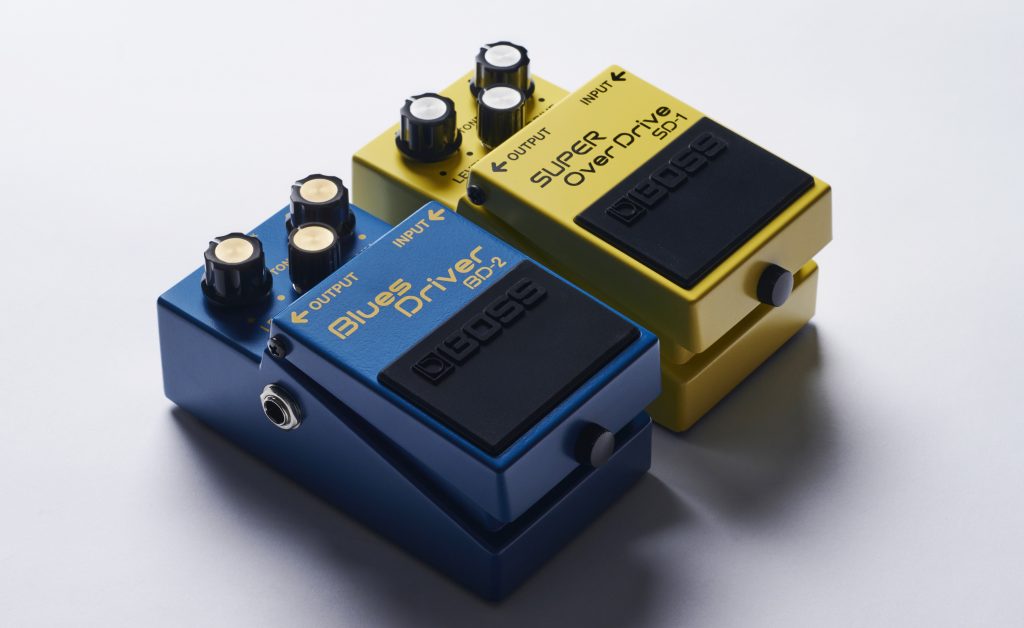
Different Settings for Rhythm and Lead
One excellent way to utilize an overdrive pedal is to try different settings for rhythm and lead. Dialing back the Tone and increasing the bass can fatten up the thickness of chords. This approach is ideal for rhythm parts. Increase the Tone or treble for solos.
If chords aren’t coming through strong enough in a chorus, increase the Drive or Gain. For a solo to cut through without extra Drive, increase the Level. These are just a few reasons it can be helpful to have multiple overdrive pedals on a board.
"An overdrive pedal can give solos an extra push giving them more impact."
Bass
Bass players will find many valuable applications for overdrive. For example, using the effect in certain sections helps the song move along, increasing tension in a pre-chorus and giving a chorus more impact.
Extra Push for Solos
An overdrive pedal can give solos an extra push giving them more impact. A player can come out of nowhere with a new tone by saving a pedal for solos. This approach can cut through the mix of rhythm guitars and other instruments. Set the pedal to bolster an existing amplifier tone or increase the Drive or Gain for a different sound. Stack it with a distortion pedal or the current drive of an amplifier for even more variations.
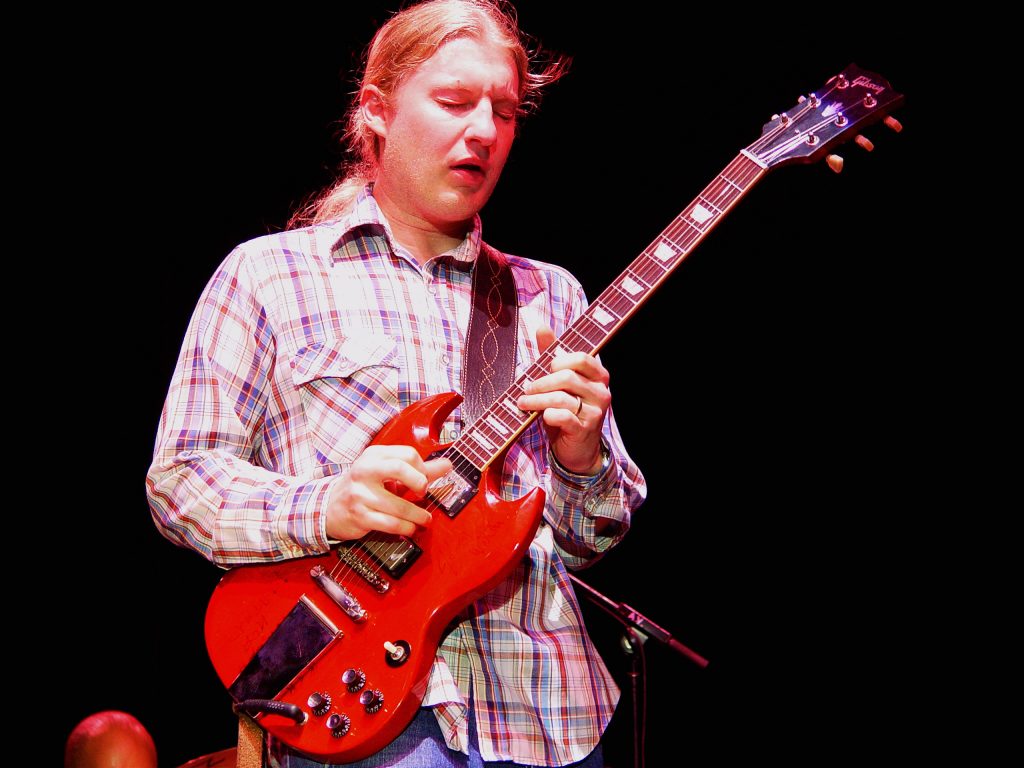
Rolling Back Guitar Volume
One powerful way to utilize overdrive is with the guitar volume knob. Guitarists like Angus Young, Derek Trucks, Joe Bonamassa, and John Mayer rely heavily on this style. BOSS pedals like the BD-2 respond beautifully to this technique, providing creamy distortion when engaged and a cleaner, tube-like sound at lower volumes.
"One powerful way to utilize overdrive is with the guitar volume knob. BOSS pedals like the BD-2 respond beautifully to this technique."
Stellar Saturation
Overdrive pedals are some of the most versatile guitar effects. They can offer a slight boost, push a tube amp into saturation at lower volumes, and create a pleasing gain. Overdrive provides stellar results for genres ranging from blues to classic rock to metal.
Get the settings right, and an overdrive pedal is an excellent tool for any guitar player looking to add extra grit to their sound. Experiment with overdrive pedals and see how they respond to various effects, pickups, and guitars. Overdrive pedals play well with others while offering an endless source of inspiration.




